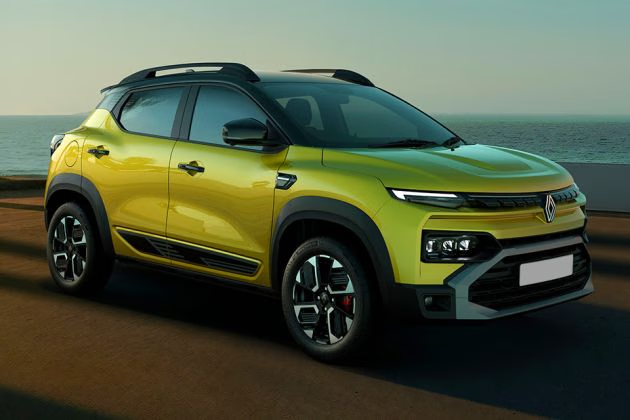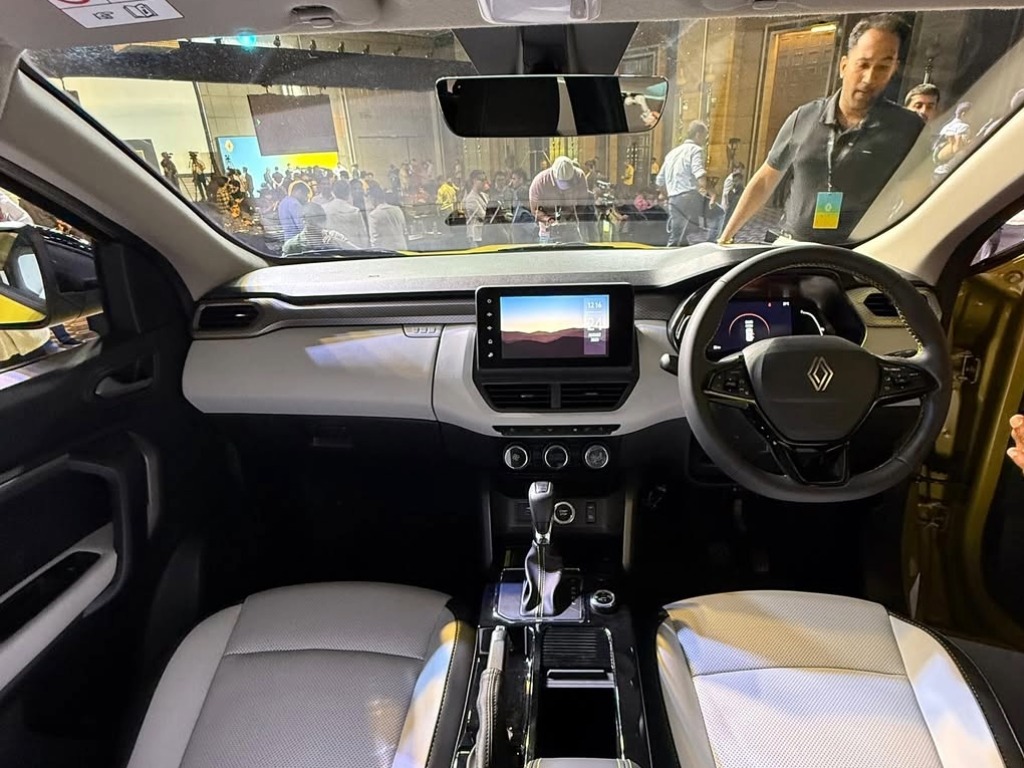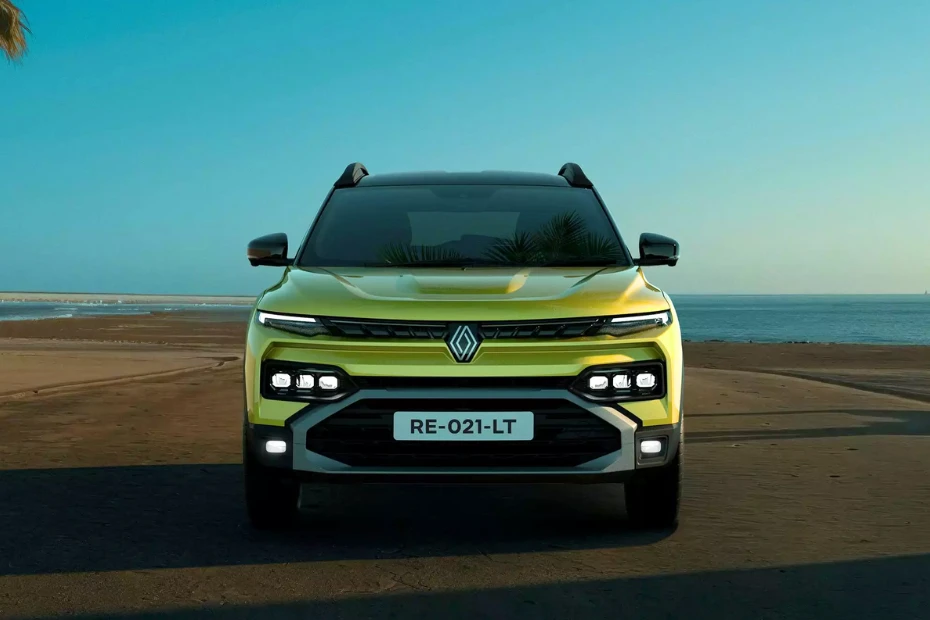Renault has recently launched the 2025 facelift of the Kiger, India’s popular compact SUV, aiming to refresh its appeal amidst tough competition. But how different is it from the outgoing model? In this comparison article, we dig deep into the design changes, features, pricing, and specifications to help you decide whether the facelift offers enough value over the original Kiger.
(Video Credit & Please subscribe : https://www.youtube.com/watch?v=zvgnKVrJlo8 )
Price and Variant Overview
The 2025 Renault Kiger facelift is priced between ₹6.30 lakh and ₹11.30 lakh (ex-showroom, pan-India), slightly higher than the pre-facelift model, with a marginal increase of around ₹15,000 to ₹20,000 across trims. The facelift continues to be offered in four variants: Authentic, Evolution, Techno, and Emotion.
Exterior Changes

Front Profile Refresh
The facelifted Kiger sports a noticeably updated front end. The grille adopts a slimmer design surrounding Renault’s new dual-layer smaller logo. The redesigned front bumper features a thick silver skid plate that adds muscularity and sportiness. The headlights maintain the signature triple ice-cube-shaped LED projector design, but the fog lamps receive a fresh housing, inspired by the Renault Triber facelift.
Side and Rear Updates
The side profile remains largely unchanged except for new 16-inch diamond-cut alloy wheels replacing the old design. On the rear, changes are subtle—a redesigned bumper with a silver skid plate and smoked tail lamps refresh the look, while the overall shape and C-shaped LED tail lights remain the same.
New Colour Options
The 2025 facelift also introduces two new color options: Oasis Yellow and Shadow Grey alongside existing hues such as Ice Cool White, Moonlight Silver, Stealth Black, and Radiant Red (dual-tone available in higher variants).
Interior Enhancements

While the dashboard layout and overall ergonomics are retained, the facelift brings a dual-tone black and light grey theme that brightens the cabin. Silver accents and white highlights on the seats enhance visual appeal. The steering wheel receives revised stitching detailing alongside Renault’s updated logo, and premium features like ventilated front seats, rear center armrest with cup holders, and 60:40 split-folding rear seats are now standard or available in select trims.
Features and Technology
- Infotainment: The 8-inch touchscreen with wireless Android Auto and Apple CarPlay remains unchanged, along with a 7-inch digital driver’s display.
- Comfort & Convenience: New additions include a wireless phone charger, automatic headlamps, rain-sensing wipers, and cruise control, enhancing daily usability.
- Safety: A key upgrade is the introduction of 6 airbags as a standard across all variants, along with ESC, hill start assist, and a reverse parking camera with sensors.
Engine and Transmission
Mechanically, the facelift remains identical to the old model:
| Engine Type | Power | Torque | Transmission |
|---|---|---|---|
| 1.0-litre Naturally Aspirated Petrol | 72 hp | 96 Nm | 5-speed Manual, 5-speed AMT |
| 1.0-litre Turbocharged Petrol | 100 hp | 160 Nm (MT), 152 Nm (CVT) | 5-speed Manual, CVT |
Fuel efficiency as per ARAI:
- Naturally Aspirated: Approx. 19.8 km/l
- Turbocharged: Approx. 20.4 km/l
Detailed Comparison: 2025 Renault Kiger Facelift vs Old Model
| Feature/Aspect | 2025 Renault Kiger Facelift | Old Renault Kiger Model |
|---|---|---|
| Price Range (₹ Ex-Showroom) | ₹6.30 lakh to ₹11.30 lakh (increased by ₹15,000 to ₹35,000) | ₹6.15 lakh to ₹11.23 lakh |
| Variants | Authentic (base), Evolution, Techno, Emotion (top-spec) | RXE (base), RXL, RXT(O), RXZ (top-spec) |
| Front Design | New aggressive grille with slimmer new Renault logo, redesigned bumper with silver skid plate | Old grille and bumper design |
| Headlights & Fog Lamps | Tripod LED projector headlights with new fog lamp housing | Original projector headlights and fog lamps |
| Side Profile | New sporty 16-inch diamond-cut alloy wheels, blacked-out door handles and roof rails on dual-tone variants | Older alloy wheel design, regular door handles |
| Colours | New shades Oasis Yellow & Shadow Grey; dual-tone finishes available freely on turbo trims | Limited colour options, no free dual-tone on turbo trims |
| Rear Design | Slightly tweaked bumper with new silver skid plate; updated Renault logo and Kiger badging | Previous rear bumper and logo design |
| Interior Colour Theme | New dual-tone black and light grey colours, leatherette upholstery on loaded trims | Single-tone black/grey fabric upholstery |
| Dashboard & Controls | Same layout but with new stitching and updated Renault logo | Original layout with previous details |
| Infotainment | 8-inch touchscreen with wireless Android Auto & Apple CarPlay | Same 8-inch touchscreen; wired smart device support |
| Comfort Features | Ventilated front seats, rear armrest with cup holders, automatic headlights, cruise control | Ventilated seats only in top trims; limited cruise control |
| Safety Features | 6 airbags standard across trims, ESC, hill start assist, TPMS, 360-degree camera on top trims | Up to 4 airbags; ESC and hill start assist in mid and top trims |
| Engine Options | Same 1.0L NA (72 hp) and 1.0L turbo-petrol (100 hp) petrol engines | Same 1.0L NA and turbo petrol engines |
| Transmission Options | 5-speed manual, 5-speed AMT for NA; 5-speed manual, CVT for turbo | Same transmission options |
| Fuel Efficiency (ARAI) | NA: ~19.8 km/l; Turbo: ~20.4 km/l | NA: ~20 km/l; Turbo: ~20.5 km/l |
Buying Guide: Which One to Choose?
- Budget-Minded Buyer:
If budget is tight, and you’re happy with the proven performance of the original Kiger, the older model offers strong value with slightly lower prices. - Feature-Focused Buyer:
Opt for the facelift if you desire updated styling, safer drives with 6 standard airbags, ventilated seats, a fresher dual-tone cabin, and wireless phone charging. - Style-Conscious Buyer:
The facelift’s sharper grille, new alloys, and fresh colour choices elevate aesthetics noticeably. - Safety-Conscious Buyer:
The addition of 6 airbags as mandatory across trims and extra safety technologies make the facelift a more reassuring choice.
Renault Kiger 2025 Facelift: Frequently Asked Questions (FAQs)
The facelifted Renault Kiger is priced between ₹6.30 lakh and ₹11.30 lakh (ex-showroom), with a slight increase of ₹15,000 to ₹35,000 compared to the old model.
The facelift features a redesigned front grille with Renault’s new diamond logo, updated bumpers with silver skid plates, full LED projector headlights, LED fog lamps, and new 16-inch diamond-cut dual-tone alloy wheels. There are also new colour options like Oasis Yellow and Shadow Grey.
Yes, the facelift introduces a dual-tone black and light grey cabin theme, ventilated leatherette seats on higher variants, revised stitching on the steering, and more premium upholstery compared to the older single-tone fabric seats.
The facelift retains the same 1.0-litre naturally aspirated petrol engine with 72 hp and 96 Nm torque, and a 1.0-litre turbo-petrol engine producing 100 hp and up to 160 Nm torque. Transmission options include 5-speed manual, 5-speed AMT for the NA petrol, and 5-speed manual or CVT for the turbo petrol.
Yes, the facelifted Kiger now comes with 6 airbags standard across all variants, electronic stability control (ESC), hill start assist, tyre pressure monitoring system (TPMS), and rear parking sensors.
It adds ventilated front seats, wireless phone charging, cruise control, automatic LED headlamps, rain-sensing wipers, and a 360-degree camera on top trims.
Fuel efficiency remains similar, with the naturally aspirated petrol delivering around 19.8 km/l and the turbo petrol offering approximately 20.4 km/l as per ARAI ratings.
Yes, with its refined suspension, improved safety tech, and efficient engine options, the facelifted Kiger is well-suited for both urban commuting and highway driving.
The facelift is offered in four variants: Authentic (base), Evolution, Techno, and Emotion (top-spec), replacing the older RXE, RXL, RXT(O), and RXZ trims.
With updated styling and enhanced safety, it competes strongly against rivals like Tata Nexon, Hyundai Venue, Kia Sonet, Nissan Magnite, and Maruti Brezza in the sub-4 meter compact SUV segment.
Renault Kiger 2025 Facelift: Pros and Cons
Pros
- Freshened Design: Updated front grille with Renault’s new slim logo, redesigned bumper with silver accents, and sportier 16-inch diamondcut alloy wheels enhance the SUV’s street presence.
- Improved Safety: Six airbags are now standard across all variants (up from 2 or 4 in older versions), along with ESC, hill start assist, and tyre pressure monitoring system (TPMS).
- Cabin Refresh: Introduces a stylish two-tone black and light grey interior theme and leatherette upholstery on higher trims, replacing the old all-fabric seats.
- New Features: Ventilated front seats, wireless phone charging, 360-degree camera, cruise control, automatic LED headlamps and wipers bring premium convenience.
- Variant Pricing: Minimal price increase (~₹15-35k) compared to the outgoing model, making new features more accessible.
- E20 Fuel Ready: Facelift engines compatible with 20% ethanol fuel blend, promoting greener fuel use.
- New Dual-tone Colour Options: Adds fresh colours like Oasis Yellow and Shadow Grey, including free dual-tone roofs on turbo variants.
Cons
- No Mechanical Changes: Same engines and transmissions as before; no performance or efficiency improvements.
- Minor Interior Layout Changes: No significant redesign of dashboard or infotainment hardware apart from colour scheme and logos.
- Boot Space & Dimensions: Remain unchanged, offering limited improvement in practicality.
- Dual-Tone Roof Cost: Though no longer charged for turbo variants, dual-tone roof costs extra on base trims.
- Competition Is Heating Up: Rivals like Nissan Magnite, Tata Punch, Hyundai Exter, and Maruti Brezza continue to advance with fresh features and powertrain options.

Roadscoop editorial a team of is a passionate automotive enthusiasts and industry experts dedicated to bringing the latest news, trends, and insights to RoadScoop.com readers. With a keen eye for innovation and a deep understanding of the automotive world, we covers everything from car reviews and maintenance tips to industry updates and market trends.

